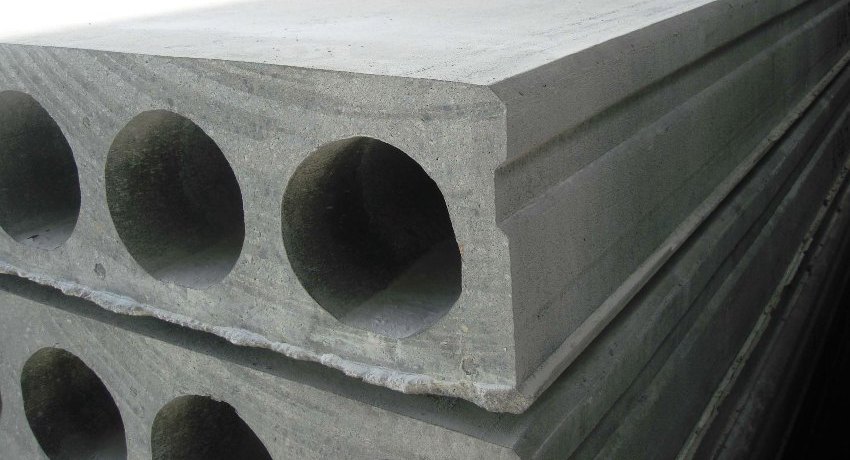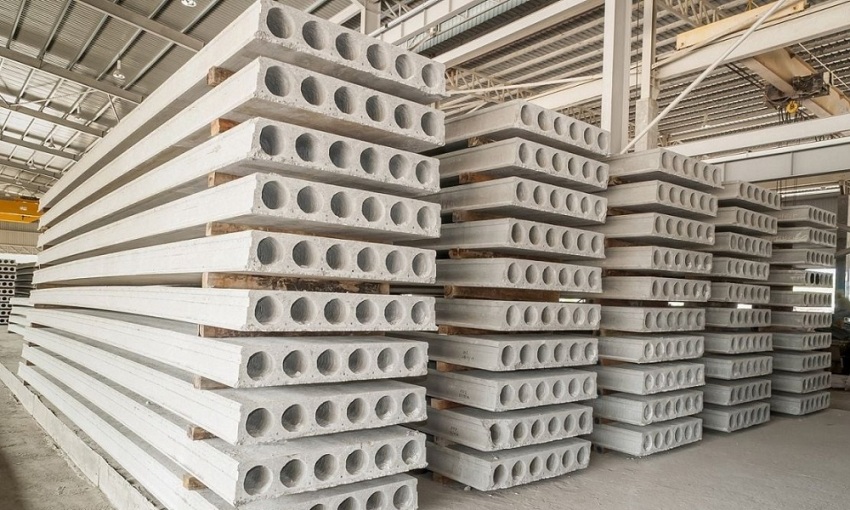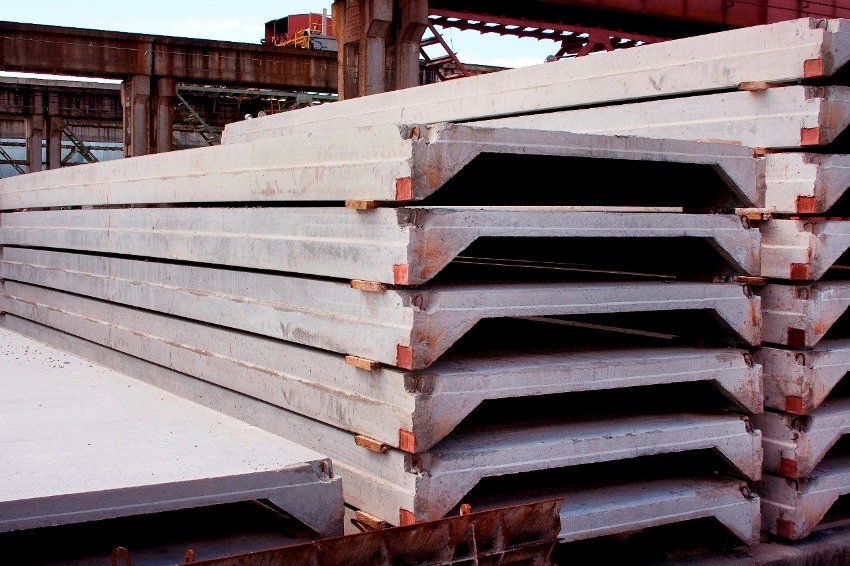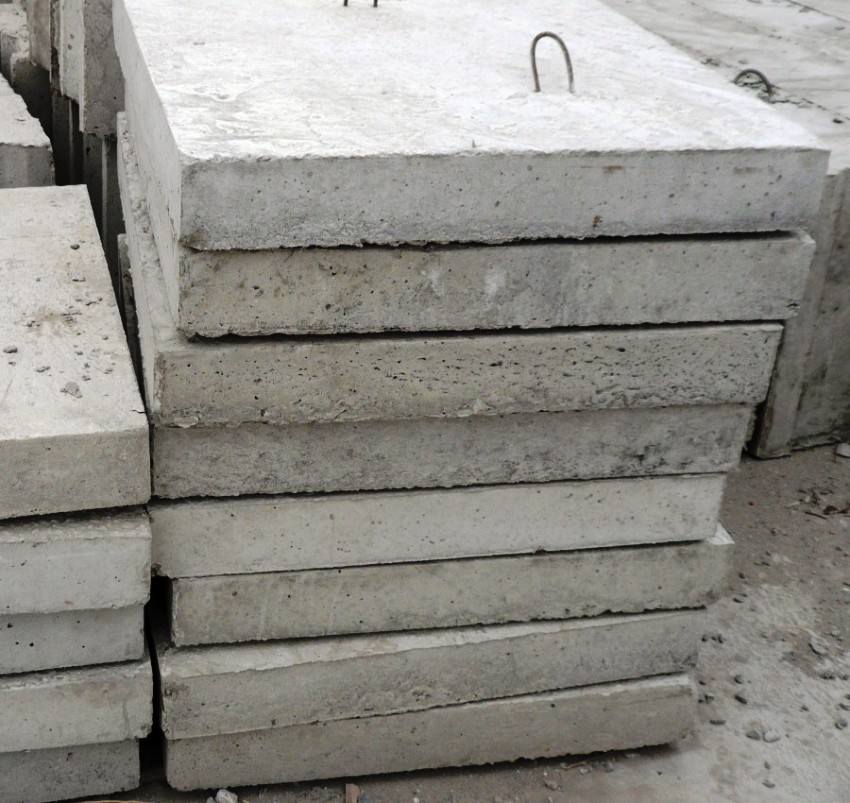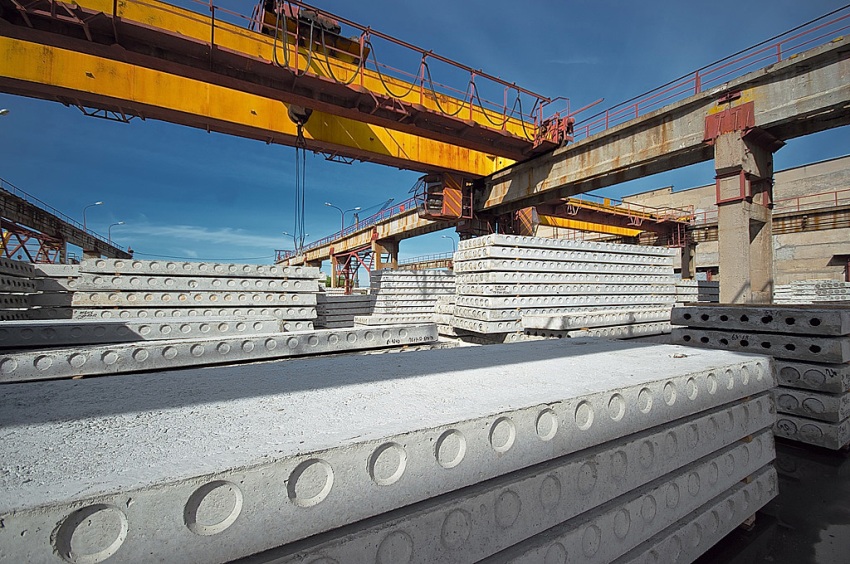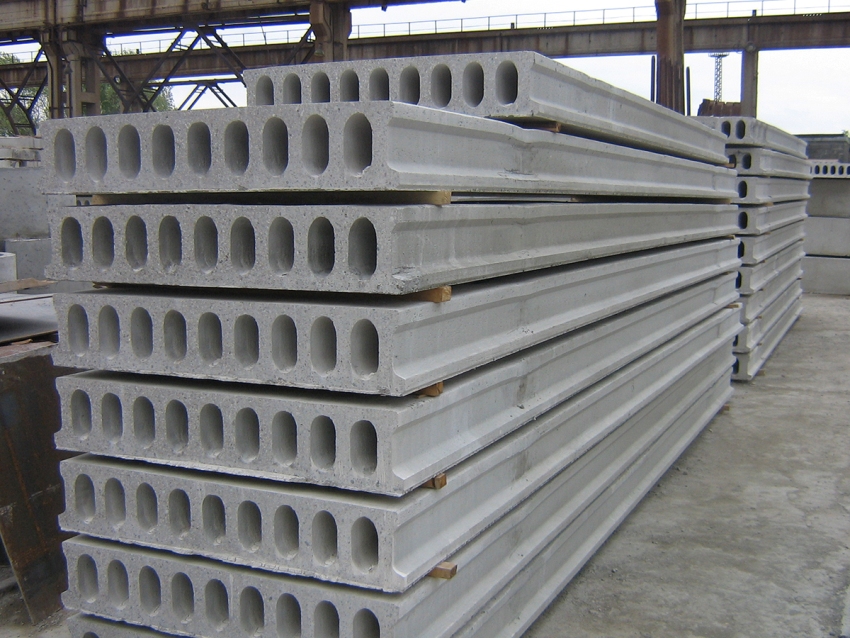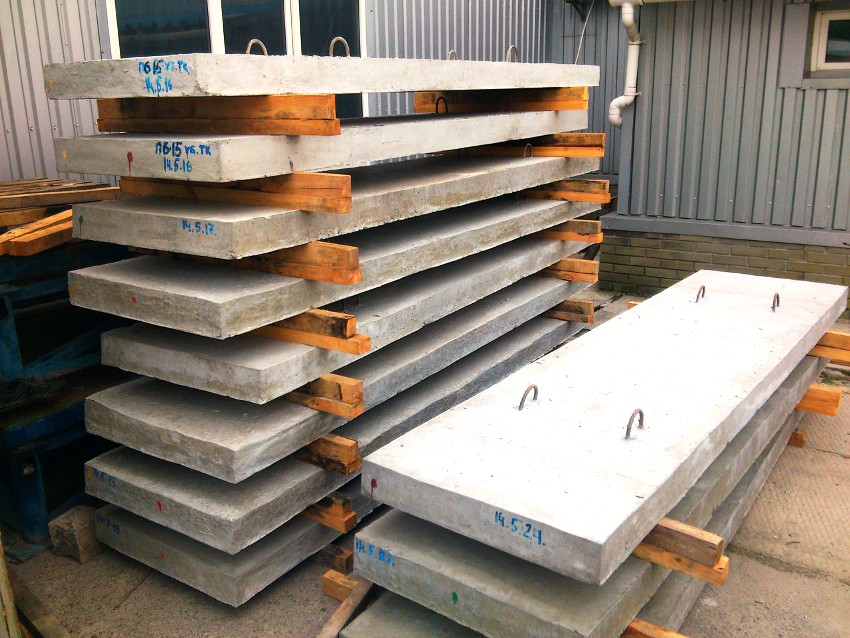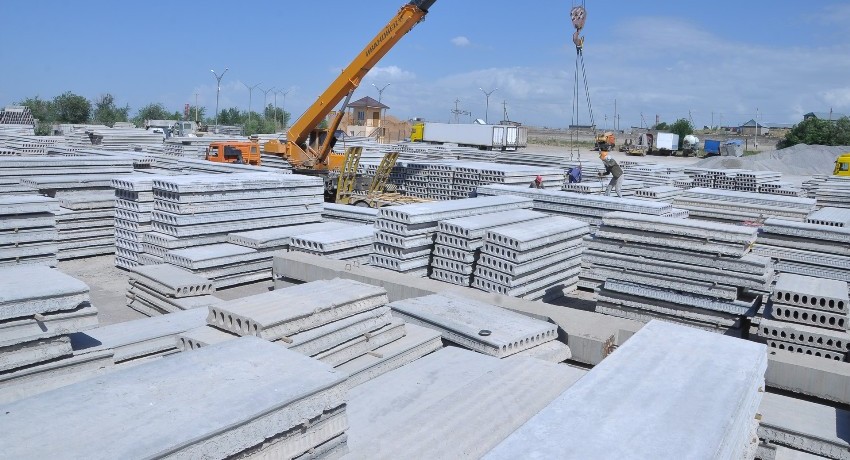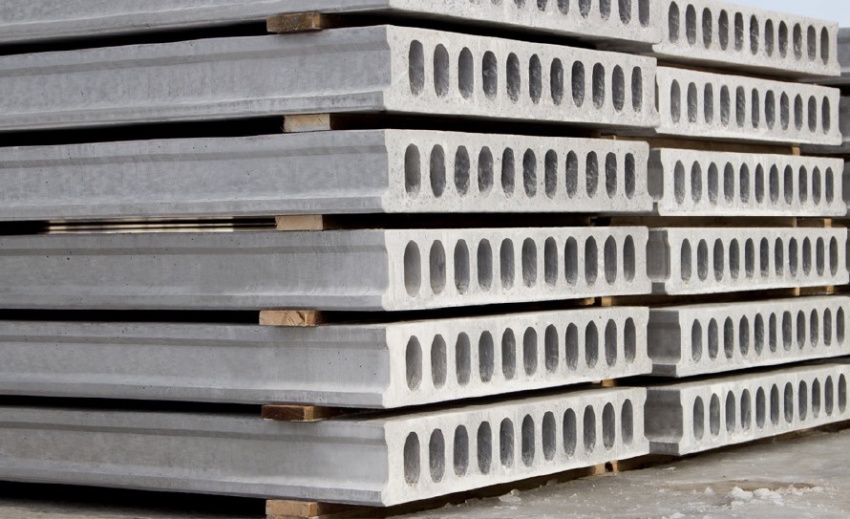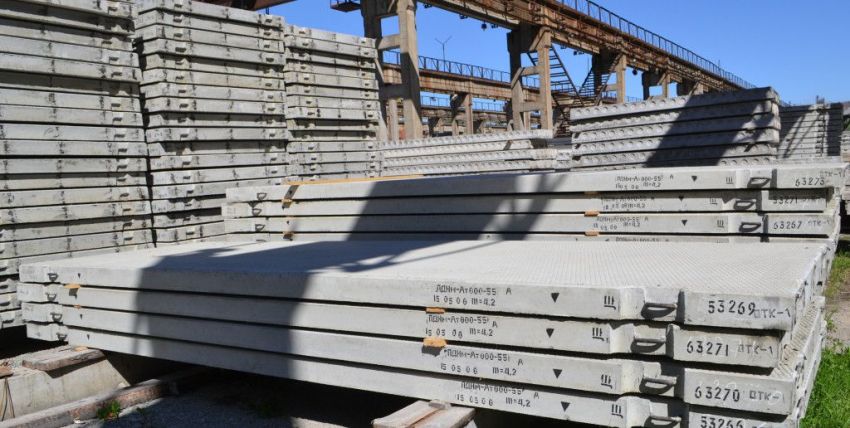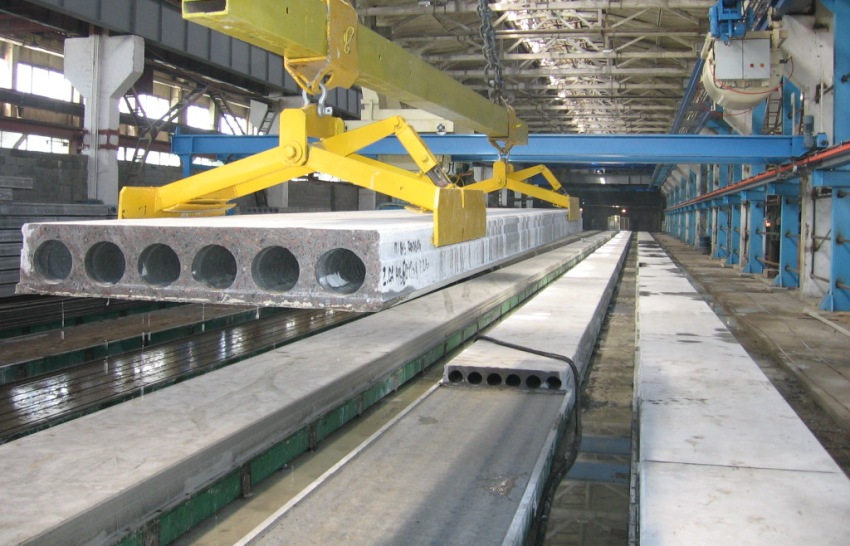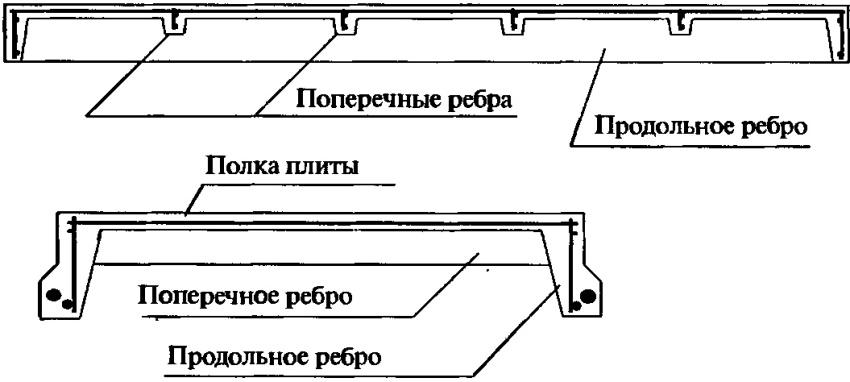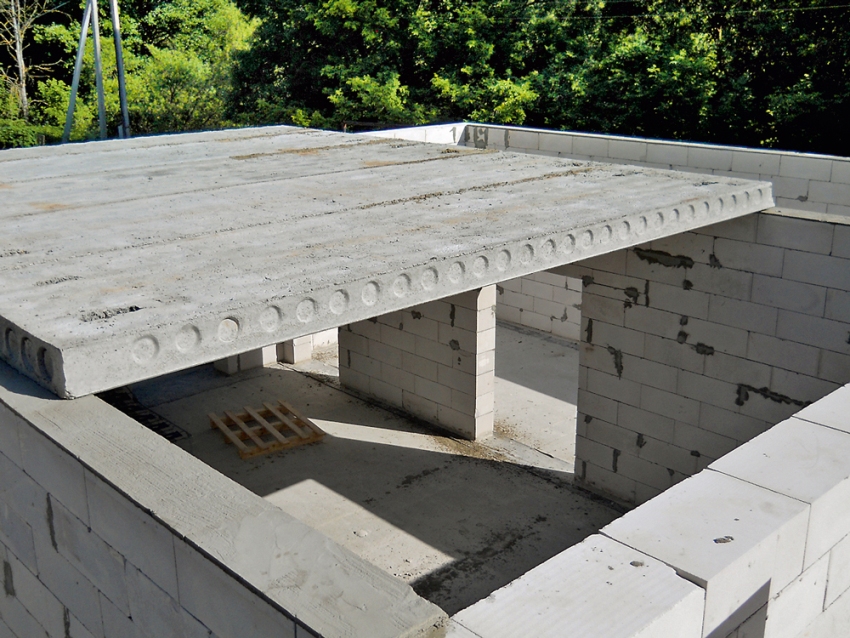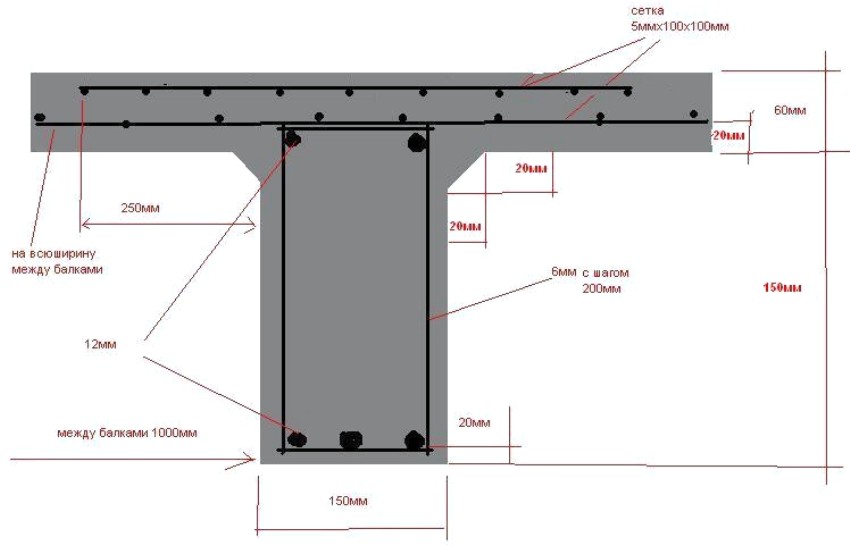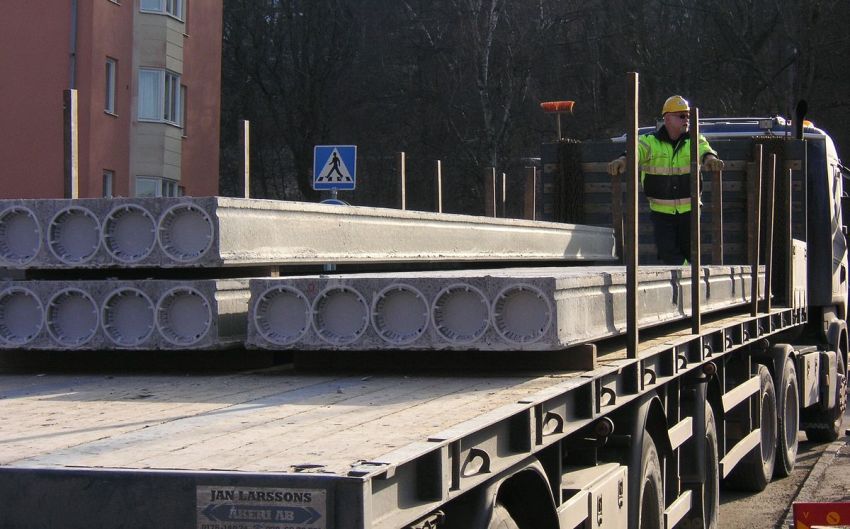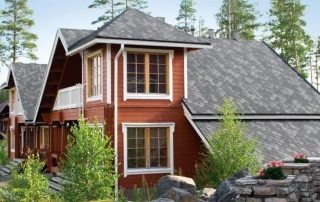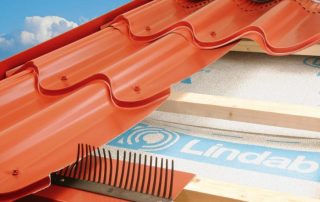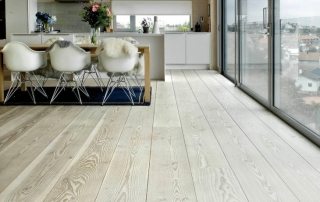Floor slabs are horizontal panels installed between floors. Interfloor slabs are used in the private construction of cottages, for multi-storey buildings, as well as for the construction of industrial buildings. Today you can buy almost any size of floor slabs, but standard products will cost significantly less. The main condition for purchasing is to choose the right type and number of panels.
Content [Hide]
- 1 What are concrete slabs: the price of the main types of products
- 2 Features of the production of concrete slabs with a volume of 2 m³ and structures of other sizes
- 3 Types of floor slabs, sizes, GOST: basic standards
- 4 Basic dimensions of hollow-core floor slabs
- 5 What are ribbed slabs, their main characteristics
- 6 What affects the size of the floor slab: standard sizes of monolithic products
What are concrete slabs: the price of the main types of products
No construction is complete without the use of reinforced concrete floors, which help to significantly speed up the construction of a building. Reinforced concrete floor slabs of various sizes are used to separate the lower floor from the upper one. The main task of the products is to provide a rigid building structure. All slabs are rectangular, made of different types of concrete, and additional rigidity to the panels is provided by metal mesh and reinforcing wire.
Due to the large selection of types and sizes, RC slabs have a wide range of uses. Structures are used to form the foundation of a building and to separate the basement from the floors above, as well as to decorate the attic. In some cases, reinforced concrete products serve as material for the construction of walls.
It is interesting! The use of slabs not only speeds up the construction process, but also helps to ensure the stability of the building. Floor panels are designed for all kinds of loads. They are considered proven and reliable elements that strengthen the rigidity of the structure.
Regardless of the size, slabs are made from a concrete mixture, which provides the products with the ability to withstand heavy loads.In addition, the products are characterized by high fire-fighting properties, practically unaffected by moisture and temperature extremes. Basically, slabs are classified according to manufacturing characteristics, because monolithic and hollow panels differ not only in appearance and price, but also in technical characteristics. The main influence on the prices of reinforced concrete slabs is the size and type of concrete used.
The price lists often indicate not only the cost for one plate, but also the main parameters, and also specify how many plates can be delivered by a machine at a time. The price range is quite large - from 350 to 10 thousand rubles, because the indicator is influenced by many factors.
Features of the production of concrete slabs with a volume of 2 m³ and structures of other sizes
Reinforced concrete is a material consisting of a mixture of concrete, reinforced with reinforcing bars or wire. It is this combination of components that makes reinforced concrete slabs of different sizes a durable building material. Due to the fact that the steel reinforcing bars are inside the concrete mixture, they are reliably protected from corrosion and harmful environmental influences.
In turn, the steel elements improve the bearing characteristics of the concrete mixture, which is relatively fragile. It is as a result of this combination that reinforced concrete structures are characterized by the ability to resist compression. Thus, regardless of size, slabs consist of the following elements:
- fittings;
- concrete, which is light, heavy or silicate.
Reinforcement inserts are steel bars or wire bundles, which, in turn, are divided into the following types:
- Workers. They are placed at the bottom of reinforced concrete products and work in bending.
- Mounting. They constitute the basis or skeleton of the structure, their main task is to give the slab volume and fix the placement of the working reinforcement rods.
For the production of ceilings, heavy, stressed concrete is used, consisting of water, a cement mixture and a special filler, which is divided into such types as:
- coarse-grained, consisting of crushed stone or limestone;
- fine-grained, the basis of which is quartz sand.
The main active ingredients that make up concrete are cement and water. Thanks to their interaction, a cement stone is obtained that holds the filler grains together, as a result of which a solid monolith is obtained.
Interesting information! Due to the fact that cement does not interact with filler, it is considered an inert material. However, the filler, regardless of the grain size, has a major impact on the properties and structure of concrete.
If in the manufacture of slabs, pre-compressed concrete is used, which is called stressed, rods in a slightly stretched state are used to reinforce it, which significantly increases the strength of the floors. The volume of products will be influenced not only by the size of the concrete slabs, but also by the characteristics of the parts used in the production.
Types of floor slabs, sizes, GOST: basic standards
Monolithic-frame buildings are gaining more and more popularity, the essence of which is the formation of one continuous slab over the entire surface of the floor. The main disadvantages of a monolithic structure are the high cost, the need to create a preliminary frame and the non-stop process of pouring concrete. That is why finished reinforced concrete products do not lose their relevance and are actively used, especially in private development.
In addition, the lower prices of concrete floor slabs and the sizes of products, which are presented in a large number in retail outlets, allow you to choose the appropriate option for each specific construction site, depending on the allocated budget and architectural idea. The slabs are easy to install and help speed up the process of building construction, and no additional installation work is required for their installation. Another significant advantage is the absence of shrinkage in reinforced concrete floor slabs.
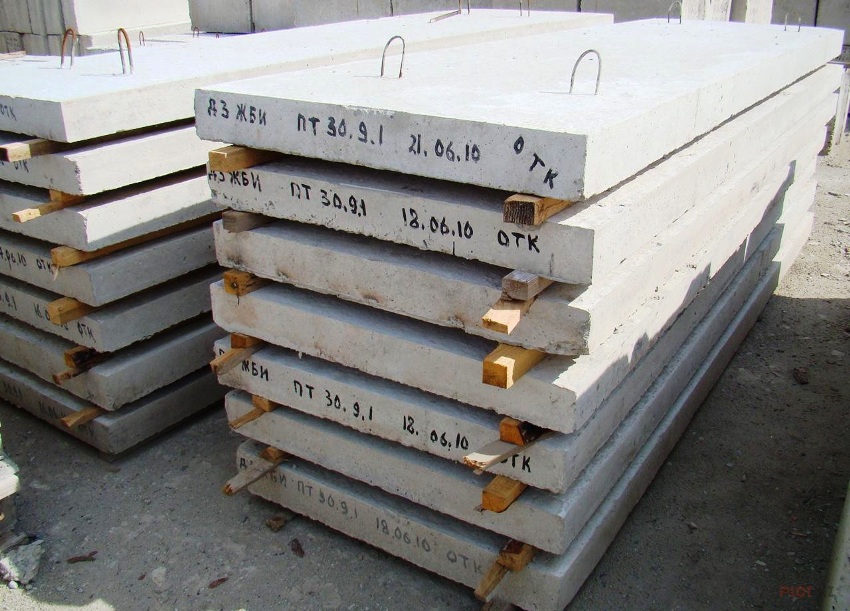
Solid slabs are characterized by a high level of strength, high weight and low sound and heat insulation properties
Such structures are characterized by increased rigidity indicators, they are resistant to moisture and temperature extremes, and have high heat and sound insulation properties. Gas-tight structures are also used in the construction of residential buildings. In most cases, the permissible load on the floor slabs is 800 kg / m², and the maximum pressure for which the products are designed starts from 8 kPa. Since houses built using floor slabs have been built for a long time, a long service life can also be noted. In the proposed list, the main types and sizes of floor slabs according to GOST are considered:
- Hollow. They have a width from 1 to 3.6 m, a length from 1.7 to 9 m. The thickness, depending on the model, varies from 16 to 30 cm. They are distinguished by the presence of hollow through holes.
- Prefabricated ribbed. According to GOST standards, the dimensions of ribbed floor slabs are represented by such parameters as height - up to 40 cm, width - up to 3 m, length varies from 6 to 18 m.
- Solid additional structures. Length - from 1.8 to 5 m, height - 12-16 cm.
Interesting information! All characteristics and dimensions of reinforced concrete products (floor slabs) are regulated by the standards of GOST 21924.2-84. Depending on the type of product, they can additionally be equipped with fittings outlets, as well as local cutouts and holes.
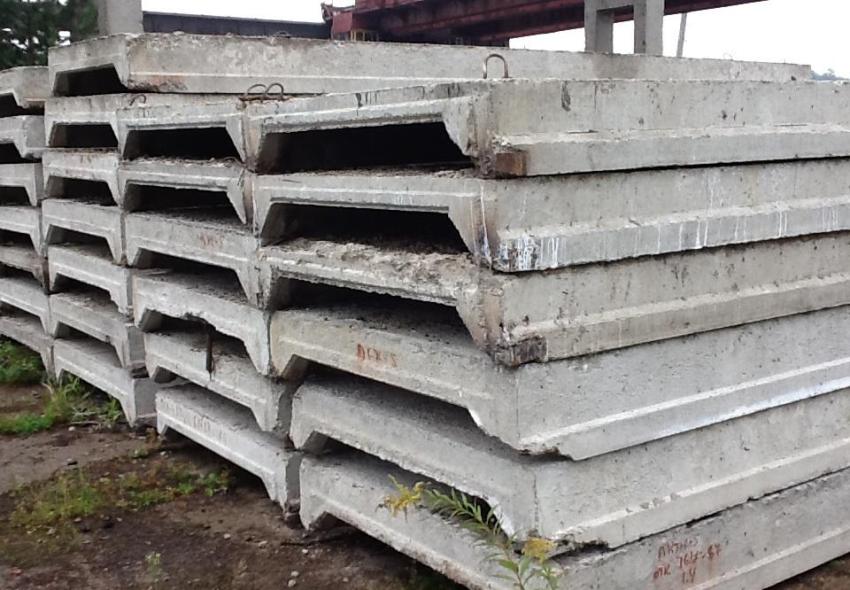
The dimensions of the ribbed reinforced concrete slab are dictated by the length and width of the room
When choosing reinforced concrete structures for construction, in addition to the main parameters, it is important to take into account the weight of the products, which will affect the type of lifting equipment used. Often on construction sites there are cranes designed to lift structures weighing up to 5 tons. For example, a concrete slab with a volume of 2 m³ or more can weigh from three to 4.5 tons, which may be too much for a conventional crane.
Hollow core slabs: dimensions, main types
This is the most common type of reinforced concrete products, which is most often produced by industrial enterprises. Due to the features and variety of sizes, hollow-core concrete slabs are widely used for industrial, multi-storey and private buildings. The presence of cavities helps to cope with the laying of communications and heating mains.
The almost completely flat and smooth surface of hollow-core panels allows not only to quickly mount interfloor ceilings, but also simplifies the work on the implementation of floor screed and ceiling design. The presence of voids does not affect the ability of the slabs to withstand heavy loads. Depending on the internal section, as well as on the shape and diameter, cavities of the following types are distinguished:
- round;
- oval;
- semicircular.
In addition to the fact that the presence of voids significantly reduces the mass of floor slabs, hollow-core panels have other advantages, which include:
- Saving concrete mix during production, which reduces the cost of finished products.
- Good performance properties. Hollow-core floor slabs have a high rate of noise and heat insulation, which increase the quality of the finished building.
- Facilitate the process of laying communications.The voids inside the slabs are used for laying not only cables, but also other communication lines, for example, pipes of different diameters.
- Large selection of sizes and prices of reinforced concrete floor slabs. In production, you can find panels of almost any size, including non-standard dimensions, but they will cost a little more.
- Lightening the whole structure. Due to the lower mass of hollow-core slabs, there will be little impact on the foundation, which will positively affect the stability of the entire structure.
Features of production and the advantages of using certain types of products
Depending on the characteristics of production, hollow core slabs are divided into hollow formwork (PC), hollow lightweight (PNO) and hollow without formwork (PB). The production process for the manufacture of hollow-core formwork slabs looks like this:
- The concrete solution is poured into the prepared metal formwork with reinforcement elements and a metal mesh located inside.
- Then, under the influence of vibration, the concrete is well compacted and processed in a hydrothermal box, the temperature in which is 80 ° C, and the absolute humidity reaches 100%. For 7-12 hours, the temperature inside the box decreases steadily.
- After the mixture has completely hardened, the finished reinforced concrete slab is removed by the fixed steel lugs, which facilitate the installation of the panels. In the warehouse, all slabs are labeled and receive technical documentation.
As for lightweight concrete slabs, they are considered to be a modernized version of PC slabs, which differ in reduced thickness. If the standard size of reinforced concrete floor slabs is 22 cm, then the thickness of the lightweight version is only 16 cm, which, in turn, affects the final weight and volume of the product. So, the volume of a concrete slab 2.4x1 m of a lightweight type will be equal to 0.38 m³, and the volume of a standard PC slab of the same size already reaches 0.52 m³, while the weight of the first slab will be 550 kg, and the second - already 750 kg, which indicates a significant difference in weight.
Due to the fact that in the production of the slab, a denser reinforcement with the use of thickened reinforcement is used, it can withstand the same weight as hollow PC slabs. Accordingly, the use of PNO slabs is considered more economical, because they are slightly cheaper in price, and the load on the foundation will be even less. Due to the fact that such plates take up less volume, more plates can be brought in by one machine, which reduces the cost of delivery of products.
Related article:
Reinforced concrete blocks: a universal material for the construction of reliable buildings
Scope of use. Varieties of blocks by type, size and area of application. The procedure for installing reinforced concrete blocks.
Slabs, which are produced without the use of formwork, are produced by a continuous casting process, and the final shape of the panel is given by a forming machine. This principle of production makes it possible to produce plates of great length - up to 9 meters, which, at the request of the customer, can be cut into any lengths with an accuracy of several centimeters. This makes it possible to use different sizes of concrete floor slabs to design complex architectural elements.
Basically, the thickness of the slabs is 22 cm, although in some cases you can find other products in height. The main advantage of PB slabs is the ability to use products in a vertical position for the construction of walls.
It is interesting! The majority of industrial enterprises manufacture exactly formwork boards, because for their production it is not required to purchase additional equipment.
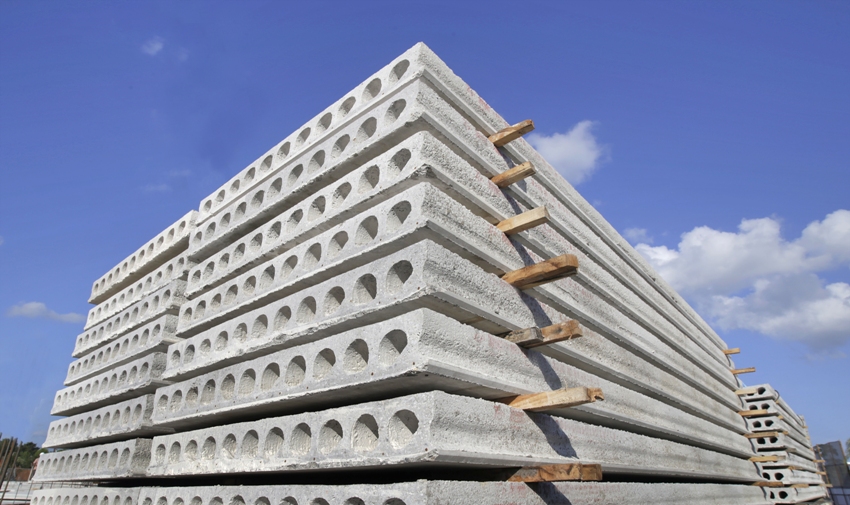
The dimensions of the hollow core slabs are convenient for overlapping spans up to 12 m long, and the shape is for laying communications
Basic dimensions of hollow-core floor slabs
The standard dimensions of hollow-type floor slabs in accordance with GOST 9561.91 vary within the following limits:
- length varies from 1.5 to 9 m;
- width - from 1 to 1.8 m;
- the minimum slab weight is 500 kg;
- the maximum weight exceeds 4 tons.
It should also be borne in mind that the diameter of the internal voids also affects the strength of the panels: the smaller the size of the through hole, the more durable the product is considered. For example, different types of 1PKK and 2PKK boards are characterized by similar dimensions, only in the first case the diameter of the through holes is 159 mm, and in the second - 140 mm, this suggests that 2PKK boards are distinguished by a greater bearing capacity.
The indicator of the calculated load is the mass that the floor can withstand, including the value of its own weight. The maximum load on the floor slab depends mainly on the type of concrete and on the thickness of the slab, which is most often 22 cm.In production, there are options for increased stability with a thickness of 30 cm - these are slabs marked 6PK, as well as lightweight structures, the height of which is 16 cm.
In accordance with GOST, the dimensions of the floor slabs of the PC should be as follows:
| Dimensions of PC plates (length, width, height), mm | Volume, m³ | Weight, t |
| 1980x990x220 | 0,44 | 0,61 |
| 2180x1190x220 | 0,571 | 0,85 |
| 2680x990x220 | 0,58 | 0,83 |
| 3180x1490x220 | 1,04 | 1,6 |
| 4180x1190x220 | 1,09 | 1,525 |
| 5080x990x220 | 1,11 | 1,475 |
| 6180x990x220 | 1,35 | 1,83 |
According to GOST, the dimensions of floor slabs PB are as follows:
| Dimensions (LxWxH), mm | Volume, m³ | Weight, t |
| 5380x1195x220 | 1,41 | 1,91 |
| 5980x1195x220 | 1,57 | 2,125 |
| 6580x1195x220 | 1,73 | 2,34 |
| 7180x1195x220 | 1,89 | 2,55 |
| 8960x1195x220 | 2,36 | 3,19 |
GOST size table for lightweight floor slabs:
| Dimensions (LxWxH), mm | Volume, m³ | Weight, t |
| 6280x1190x160 | 1,20 | 1,7 |
| 5380x1190x160 | 1,02 | 1,4 |
| 3580x1190x160 | 0,68 | 0,92 |
| 4780x1190x160 | 0,91 | 1,25 |
| 5980x990x160 | 0,95 | 1,43 |
| 4780x990x160 | 0,76 | 1,1 |
| 2380x990x160 | 0,38 | 0,55 |
Hollow-core floor slabs PB, PK and PNO are widely used in construction. Regardless of the type chosen, in the end, anyway, for any number of floors, a high-strength structure will be obtained. Despite the fact that the boards differ in the way they are produced, they are still designed to solve similar problems.
What you can learn about the characteristics and dimensions of PC floor slabs
Not every builder is required to study the features of the production of various types of panels before buying, but everyone who has to deal with the purchase of materials for construction should know how to decipher the markings indicated on the products. Each product is labeled in accordance with GOST 23009.
The product is usually marked with 3 alphanumeric groups separated by dashes and dots. At the beginning, the type of panel and the main dimensions of the covering slab, such as length and width, are usually indicated. It is important to know that all values are indicated in decimetres and are rounded to the nearest whole value. In addition, the designations indicate the bearing capacity of the floors, or it can be an indicator of the calculated load, measured in kilopascals or kilograms per square meter of the product.
If a slab made of prestressed concrete is purchased, the class of reinforcing steel is additionally indicated. The type of concrete is usually not indicated on the product. The third group of marking often contains the following characteristics:
- resistance to gases;
- ability to withstand seismic impact;
- the presence of additional embedded elements.
As an example that will help you understand the structure of the marking, you can consider the hollow-core slab 1PK63.15-6AtVL, where:
- 1PC - means that this is a hollow-core slab with rounded through holes;
- 63 - rounded length in decimetres, in millimeters it will be 6280;
- 15 - rounded width value, when translated into millimeters means 1490;
- 6 - maximum panel load is 6 kPa or 600 kg per square meter;
- ATV - marking indicating the class of used fittings;
- L - this letter means that the product is made of lightweight concrete.
If the product has a marking of a similar type 1PK 63.15-6AtV-C7, then we can say that such a slab is designed for use in an area of increased seismic activity and is capable of withstanding tremors up to 7 on the Richter scale. This is what the additional marking C7 speaks about.
Differences between PB (PPS) and PC (PNO) floor slabs: sizes, prices and other parameters
If we talk about the thickness parameters, all types of hollow-core slabs range from 160 mm to 300 mm, but 220 mm is considered to be the standard. As for the length, the PB slabs are characterized by increased dimensions - the maximum value here reaches 12 m, while it is possible to cut the product with an accuracy of 10 cm.The standard length of the PC slabs is up to 7.2 m, while the step is clearly regulated, and the maximum length PNO panel reaches 6.3 m.
The width of panels of any type is generally standard and is characterized by the following values (in meters):
- 1;
- 1,2;
- 1,5;
- 1,8.
PB slabs are most often produced with a width of 1.2 m, much less often you can find options 1 and 1.5 m.Production of non-formwork slabs with a width of 1.8 m is practically not found. Typical load on hollow-core slabs is 800 kg / m². However, the maximum load on PC slabs reaches 1250 kg / m2, while PB slabs can be ordered for a load of 1600 kg / m2.
Helpful advice! If you purchase a slab with open cavities at the ends, they must be sealed using cement mortar and insulation.
An important difference between PC and PB boards is the smoothness of the surface: while the first option cannot boast of a flat surface, PB boards, thanks to smoothing with an extruder, have a smooth and attractive appearance. The average density of concrete slabs, regardless of the type, is 1400-2500 kg / m³.
The table shows the spread of prices depending on the parameters:
| Plate type | Dimensions (LxWxH), mm | Weight, t | price, rub. (PC.) |
| PC | 3380x1490x220 | 1,64 | 5360 |
| 2380x1490x220 | 1,2 | 3780 | |
| 2980x1190x220 | 0,97 | 3600 | |
| 2180x1190x220 | 0,82 | 2940 | |
| PB | 2080x997x220 | 0,69 | 2914 |
| 2380x997x220 | 0,79 | 3334 | |
| 2180x1197x220 | 0,84 | 3677 | |
| 3180x997x220 | 1,05 | 4468 | |
| PNO | 3180x990x160 | 0,95 | 4450 |
| 2380x1490x160 | 0,67 | 4624 | |
| 4780x990x160 | 1,1 | 6073 | |
| 1580x1190x160 | 0,3 | 2998 |
What are ribbed slabs, their main characteristics
Ribbed floor slabs are also called U-shaped. They got their name due to two parallel stiffening ribs, the distance between which is generally 600 mm. Additional rigidity of the product is provided due to the reinforcement, which allows reducing the consumption of concrete and at the same time maintaining the strength that affects the resistance of the structure to bending. Product performance is enhanced by the presence of multiple transverse ribs. Slabs are made of concrete grade B15 or B20. Taking into account the external features, the panels are divided into 2 types:
- Plates that are distinguished by the absence of an opening in the shelf are marked with the letters PG.
- Blocks in which there is a recessed opening are characterized by the PV marking. The main advantage of using ribbed plates of this brand is the possibility of conducting an air duct or creating a ventilation shaft.
Due to their special appearance and specific characteristics, U-shaped floor slabs are often used in the construction of non-residential structures such as garages or warehouses. When erecting residential buildings, it is impractical to use slabs of this kind to create an interfloor space, because they do not have such a flat surface as other floor options. An uneven ceiling will look ugly, it will not be easy to sheathe it aesthetically, and there will be difficulties with laying communications.
It is interesting! In some cases, ribbed slabs are used to create heating or water supply networks.
The main distinguishing feature of ribbed panels in comparison with other types of flooring is the height. The thickness of a U-shaped concrete slab is usually in the range of 30-40 cm. Thinner options are used for the construction of small buildings and for separating the attic from the room. Slabs 40 cm thick are often found on industrial construction sites.
The dimensions of the ribbed floor slabs also differ from each other in width: the value of this parameter is in the range of 1.5-3 m, and each type has its own advantages. Thus, construction using three-meter panels will be faster due to the greater width, which will reduce not only time, but also labor costs. If you use narrower one and a half meter slabs, the building will come out stronger.
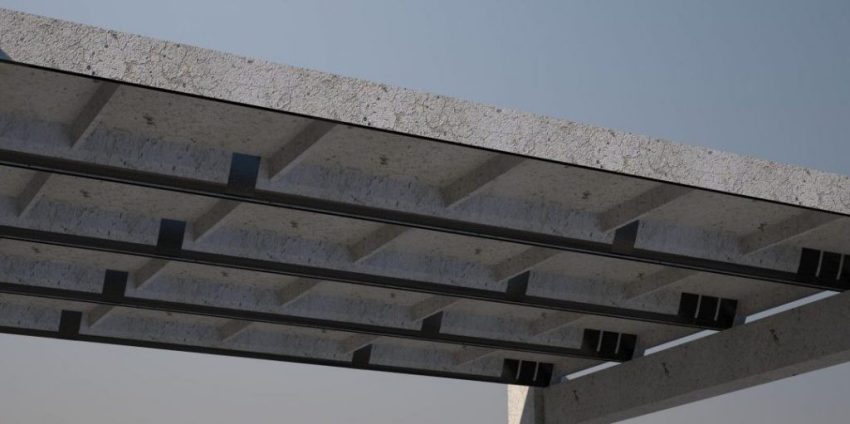
One of the disadvantages of ribbed floor elements is the impossibility of their use in the construction of residential buildings.
Other characteristics of ribbed concrete floor slabs: dimensions and other parameters
Compared to the dimensions of PC boards, ribbed floor slabs significantly exceed them in length. Mainly in production there are products, the length of which is 6 or 12 m. For individual production, there are also options for 18-meter panels. As in other cases, their mass also depends on the size of the plates, which is especially important to consider when transporting products and when creating an installation plan.
A slab for a house measuring 12 m can weigh from 4 to 7 tons, although the average value is considered to be 1.5-3 tons. If desired, you can order slabs made of lighter concrete, which will affect the weight of the product. All U-shaped structures are equipped with mounting loops for convenience.
When buying, you need to pay attention to the presence of holes intended for laying communications, as well as the brand of concrete used in production. All these characteristics ultimately affect the bearing capacity of the building. According to GOST, the maximum load on ribbed floor slabs is 180-830 kg / m².
As for the price, ribbed slabs, in comparison with PC slabs, are slightly cheaper, and they are also lighter in weight than hollow-core slabs. The main reason why they are purchased less often than other options is the high conductivity of cold.
The thickness of the floor slab on the upper shelf does not exceed 5 cm. This means that even at a slight minus temperature, the thin shelf will let the cold inside the building in a short time. For this reason, ribbed floors require additional insulation, which entails unnecessary time and financial costs.
The table shows the sizes of floor slabs:
| Dimensions (length, width), mm | Thickness, mm | Weight, kg |
| 1170х390 | 90 | 65 |
| 1370х390 | 76 | |
| 1570х390 | 87 | |
| 1770х390 | 100 | |
| 2370х390 | 120 | 154 |
| 2570х390 | 167 | |
| 2970x390 | 150 | 197 |
| 3170x390 | 206 | |
| 3370x390 | 227 | |
| 3570x390 | 240 |
What affects the size of the floor slab: standard sizes of monolithic products
In the classification of ceilings, monolithic slabs occupy a special position due to the fact that they are installed only in special cases. The thickness of a monolithic floor slab mainly depends on the length of the product:
- if the length is 6.6 m, the thickness will be within 16 cm;
- with a length of 3.6-4.2 m, the thickness does not exceed 12 cm.
The price and size of reinforced concrete slabs of a monolithic type directly depend on the thickness of the product. The thicker the product, the more significant it is in weight, but it should be borne in mind that with this indicator equal to 16 cm, the products will have increased sound and thermal insulation characteristics, and thin plates will have to be additionally insulated and soundproofed. Despite the fact that the size of the monolith is also regulated by the standards of GOST, it is possible to make custom-made products on order. When choosing dimensions, you need to take into account that the larger and heavier the product, the more difficult it will be to deliver and raise it to the desired height.
The production of monolithic slabs involves the use of reinforcement, which is the basis of the future structure. The reinforcing mesh is laid so that the distance between it and the formwork body does not exceed 3 cm.The formwork is a collapsible structure that is used to shape the slab and resembles a box. The thickness of the steel rods should be from 1 to 1.2 cm. For the production of slabs of this type, high-quality concrete of the M200 brand is used.
Helpful advice! On trading floors, you can find reusable formwork that allows you to make slabs yourself. The main disadvantage of a monolithic structure is a long solidification time of up to 28 days. Therefore, construction is better carried out in the warm season, because high humidity and frost extend the hardening time.
It is also important to take into account that a monolithic concrete slab with a volume of 2 m³, immersed on the base, will be somewhat heavier than hollow-core or ribbed slabs, which must be taken into account when calculating the bearing capacity of the building's supporting structure. Also, to lift the slab, a heavy-duty crane is required. It is for this reason that large-sized monolithic slabs, in contrast to PC panels and U-shaped slabs, are made directly at the construction site.
What are the varieties of monolithic reinforced concrete floor slabs: sizes and prices of products
Monolithic floors are divided into 3 types, each of which has its own differences, the method of installation and the final cost per piece. There are such varieties:
- beam;
- bezel-less;
- ribbed.
The beam type of overlap, depending on which surface the slab has - smooth or ribbed, also differs in the nature of the use of structures. A slab with a ribbed surface is laid perpendicular to the edges, and smooth products are mounted perpendicular to the slabs. The rigidity of the finished building also depends on the correct laying. In construction, 2 types of beams are used:
- main ones that have a larger cross-sectional diameter;
- minor - with a smaller diameter.
For spans of significant size, floors with a three-meter span are used. Monolithic reinforced concrete beams are laid on the wall, which are then connected to the main reinforced concrete slab and additionally reinforced. Usually beams are laid at a distance of 1.3-5 m from each other. To achieve greater rigidity, they are additionally fixed in a reinforced concrete belt using anchors. The beam type of overlap is used where it is imperative to obtain an even ceiling, which is especially important for a residential building. The price of a reinforced beam up to 6 m in size starts from 1213 rubles. a piece.
Columns with capitals made in the form of an inverted pyramid are used to create a non-girder floor. The section of the reinforcing pins is 8-12 mm. The capitals are distinguished by the release of fittings on both sides, which, in turn, enter the slab and add rigidity to the structure. The span thickness of frameless slabs is 1 / 35-1 / 30 relative to the length of the product itself.
Recently, more and more often, columns and slabs are concreted at the same time. The price directly depends on the size of the overlap and ranges from 300 to 2500 rubles. for 1 m².
Unlike ribbed slabs, the caisson type of flooring is characterized by the fact that here the ribs are located in both directions. The main advantages of using this type of flooring are the reduced weight of the structure, the greater bending strength provided by the ribbed mesh.
During construction, reinforcement reinforcement is used at the junction of the column and the floor to make the structure more reliable, in which the pins of the column are introduced into the cavity of the formwork. The cross-sectional diameter of the pins is at least 8 mm.
The main advantages and disadvantages of using monolithic slabs
Monolithic floor slabs, due to their characteristics, are often used in the construction of buildings with a complex architectural design and in the event that the structure has non-standard parameters and is characterized by complex angles and shapes. The main advantage of the monolith is the increased rigidity of the building, therefore it is used in those cases when it is required to carry out a building designed for a heavy load.
For example, it is relevant to use monolithic slabs in the construction of an industrial workshop, in which there will be not only static, but also dynamic load caused by constant vibration of the equipment. Other advantages of monolithic products:
- Savings on delivery. Due to the large size, the slabs are assembled directly at the construction site, which saves on logistics, as well as loading and unloading work. In addition, there is no need to equip a warehouse for storage.
- Availability of building materials used for manufacturing. Concrete can always be bought or made immediately at the construction site, and waste of secondary ferrous metal is also suitable for reinforcement.
- Facilitation of work on interior decoration. Thanks to the use of formwork, the lower surface of the slab will have a flat and smooth surface, which will allow you to quickly carry out finishing work with minimal costs.
- Increased thermal insulation characteristics. The absence of joints between the slabs increases the ability not only to retain heat, but also to absorb sound.
- Long service life. Due to the fact that concrete protects steel rods from corrosion, which, in turn, increase the performance of concrete, the building will remain strong for a long time. However, it should be borne in mind that other types of overlap have these characteristics.
- Wide range of sizes and shapes. Since monolithic slabs can be given any shape using formwork, their use allows you to design outrigger balconies of rounded shapes, as well as to make smoother bends on the facade of the building.
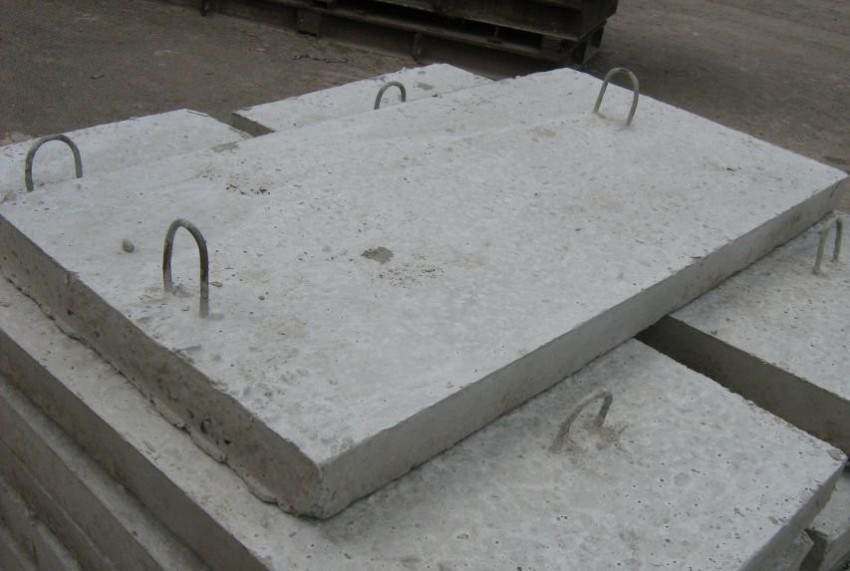
The absence of joints between monolithic slabs increases the ability to retain heat and absorb sound
As for the shortcomings, the main one is considered to be technically difficult work, because a monolithic slab of the required dimensions with strength characteristics is produced only by experienced specialists with the appropriate skills. GOST does not provide for standards for self-made concrete products. The overall parameters of the products are calculated individually in each case, respectively, additional costs should be allocated to pay for the work of a pouring specialist. Other disadvantages of monolithic slabs:
- Considerable weight. The absence of voids and the large dimensions of the products give the finished product a large mass, which will require the creation of a more solid foundation.
- Long curing time. According to GOST standards, the period of concrete hardening in the formwork is 28 days, which extends the construction period.
In order not to be mistaken when buying a slab for construction, first of all, in addition to size, you need to ask the seller about the origin of the goods and about the manufacturer's reputation. It is important to check the grade of concrete and the quality of the finished panel. You should not purchase products with obvious violations of integrity, which will reduce the bearing capacity of the structure. It is imperative to make sure that you have a product passport, and then, based on the required dimensions, select the number of plates. The main thing is to understand that the stability of the finished building depends on the quality of the floors.
